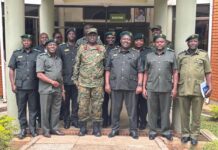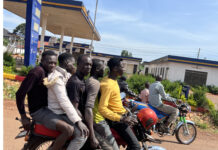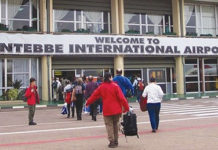Overview of Queen Elizabeth National Park
Queen Elizabeth National Park, the most popular savanna park in Uganda, is renowned for its diverse wildlife and habitats, making it an ideal destination for a Ugandan Holiday. The park is particularly famous for its lions, including the unique tree-climbing lions, plus the magnificent Kyambura gorge forest which is home to the chimpanzees. The habitat in the park include; open savanna, forest, lakes, swamps, not forgetting the mountain Rwenzori.
Location of Queen Elizabeth National Park
Queen Elizabeth National Park is situated in the western part of Uganda, nestled between Lakes George and Albert, with the Kazinga Channel cutting across its 700 square mile expanse. Named after Queen Elizabeth II following her visit in 1954, the park’s location offers stunning landscapes and abundant wildlife.
Wildlife in Queen Elizabeth National Park
The park boasts an impressive array of wildlife:
Bird Species: Home to 618 bird species, Queen Elizabeth National Park holds the record for the highest bird diversity in Africa and ranks sixth globally, making it a prime spot for Uganda Birding Safaris.
Mammals: The park is home to 95 mammal species, including big game and 10 primate species with the most notable one being the chimpanzees.
Key Attractions in Queen Elizabeth National Park
Kazinga Channel
This natural waterway linking Lakes Albert and George is teeming with wildlife such as hippos, Nile crocodiles, buffaloes, and elephants. A Kazinga Boat Ride offers an up-close view of these animals.
Kasenyi Plains
A hotspot for Uganda Wildlife Safaris, the Kasenyi Plains are known for their large populations of antelopes, including Uganda Kobs, as well as lions and other predators.
Tree Climbing Lions
The Ishasha sector in the southern part of the park is one of only two places in the world where you can observe tree-climbing lions, often seen lounging in fig and acacia trees.
Kyambura Gorge
This lush, 100-meter-deep valley is a prime location for chimpanzee tracking tours, offering rich biodiversity and stunning scenery. Note that a reasonable degree of fitness is required for any visitors intending to take a hike into the Kyambura gorge.
Mweya Peninsula
Jutting into Lake Edward, the Mweya Peninsula is perfect for game drives and offers excellent wildlife viewing opportunities along its numerous game tracks.
Kalinzu Forest
Located in the southeastern corner of the park, Kalinzu Forest is famous for chimpanzee tracking experiences.
Lake Katwe Salt Works
Visitors can learn about traditional salt mining methods at Lake Katwe, where salt extraction has been and is the key economic activity for the people in the area for years.
Katwe Explosion Crater Lakes
These northern lakes provide panoramic views of the Rwenzori Mountains, the western rift valley escarpments, and Lakes George and Edward.
Accessibility
Queen Elizabeth National Park is approximately 389 km from Kampala. Visitors can reach the park either by road or by air. By road it takes about 7 to 8 hours’ drive via either Masaka – Mbarara road or via Mubende – Fort Portal Road. By air, you can either take a scheduled flight from Entebbe International Airport (morning or afternoon schedules) or a charter flight from wither Entebbe International Airport or Kajjansi Airstrip.
Accommodation
The park offers a range of accommodations to suit all budgets, from luxury lodges to budget campsites. Notable options include the Ishasha Wilderness Camp, and Ishasha Jungle Lodge in the southern part of the park, Kyambura Gorge Lodge, Mweya Safari Lodge, Elephant Plains Lodge, Buffalo Safari Lodge, Bush Lodge all located in the northern part of the park. Note that the northern part of the park has more accommodation options compared to the southern part of the park. You can as well stay in Kasese town and go for activities in Queen Elizabeth National Park.
Best Time to Visit Queen Elizabeth National Park
The dry season, from January to February and June to September, is the optimal time for a visit, with peak safari months being June to September. Birding is best from March to May and August to December, when migratory species are present.
Additional Uganda Destinations
Many visitors to Uganda combine their safari with other activities:
Gorilla Trekking: Bwindi Impenetrable National Park and Mgahinga Gorilla National Park
Murchison Falls National Park: Another major wildlife destination
Ssese Islands: Ideal for post-safari relaxation
Adventure Activities: Rafting on the Nile, chimpanzee trekking in Kibale, and mountain climbing in the Rwenzori Mountains and Mount Elgon.
How to Book a trip to Queen Elizabeth National Park
For an enhanced experience, booking through a reputable tour operator is recommended. They can arrange all aspects of your safari, including accommodation, transport, and activities.






